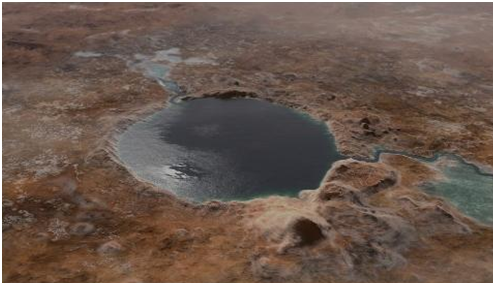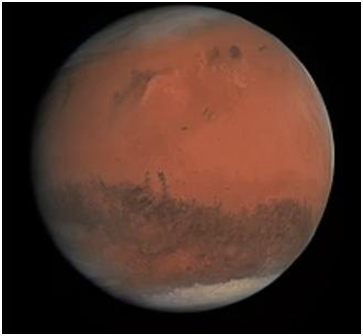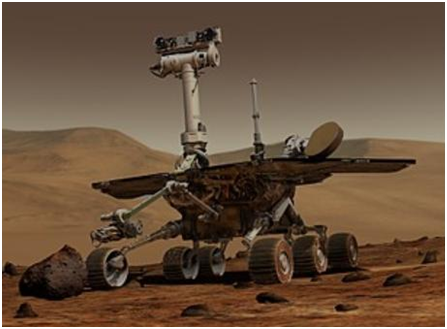The Red Planet Mars has always been an enigma for many intellectuals, academicians and also laymen in general. There are many scientific reasons for going to Mars which can be condensed as the following, i) the search for life, ii) understanding the surface, iii) understanding the planet’s evolution and iv) preparing the planet for future human exploration. Understanding if life ever existed anywhere else in the Universe beyond Earth is a fundamental question for humanity.

Exploring the surface of Mars helps scientists to learn about the momentous shifts in the Martian climate that can fundamentally alter planets. It also lets us look for biosignatures, which are signs that might reveal whether life was abundant in the planet’s past and whether it still exists on Mars today.
After our home planet Earth, Mars is the most habitable planet in our solar system because of many reasons. Gravity on Mars is 38% that of our Earth’s, which is believed by many to be enough for the human body to adapt. It has an atmosphere, although a very thin one, that offers protection from cosmic and the Sun’s radiation.
The planet Mars has been explored multiple times remotely by spacecraft. Probes sent from our planet Earth, beginning in the late 20th century, have resulted in a large increase in knowledge about the Martian environment, focusing primarily on understanding its geology and habitability potential. Engineering interplanetary journeys is a complicated task and the exploration of Mars has experienced a high failure rate, especially the early attempts. Roughly sixty percent of all spacecraft destined for Mars failed before completing their missions and some failed before their observations could begin. Some missions have met with unexpected success, such as the twin Mars Exploration Rovers, Spirit and Opportunity which operated for years beyond their specification
Perseverance is the Mars rover mission by NASA under its Mars Exploration Program that includes the rover and a small robotic helicopter Ingenuity. It was launched from Earth on an Atlas V launch vehicle at 11:50:00 UTC on 30 July 2020,
After traveling 293 million miles to reach Mars over the course of more than six months, the rover landed on the surface of Mars at the Jezero crater at 20:55 UTC on 18 February 2021.
Perseverance, which is a part of the Mars 2020 mission, was launched to investigate the Martian surface on the astrobiological basis. It plans on collecting data relevant to the ancient environment on Mars and examines its surface’s geological processes and history, including the evaluation of its previous habitability, the possibility of ancient life on Mars, and the potential for preservation of biosignatures inside accessible geological substances. It plans on collecting sample containers along its path for retrieval by a prospective Mars sample return mission.
The Mars 2020 mission was declared by NASA on 4 of December, 2012 at the autumn quorum of the American Geophysical Union which took place in San Francisco. Perseverance’s design is inspired from the Curiosity rover, and it utilizes various parts already manufactured and tested previously, including current scientific instruments and a core drill. The rover uses nineteen cameras and two microphones allowing for video and audio recording of the environment of Mars.

Mars 2020 is the third of three space missions sent to Mars during the July 2020 Mars launch window, with missions also launched by the national space agencies of the United Arab Emirates and China.
The rover plans on exploring the Jezero crater which scientists believed was a 250 m deep lake about 3.9 billion to 3.5 billion years ago. In present times, the Jezero crater profiles an eminent river delta where the water flowing through it accumulated a lot of sediment over the billions of years which is “extremely good at preserving biosignatures” as speculated by scientists. The sediments in the delta probably include carbonates and hydrated silica which are known to conserve microscopic fossils on Earth for eons.
Prior to the choosing of Jezero as the landing site there were eight other proposed landing sites for the mission were under consideration. Jezero crater was finally chosen as the landing site in the month of November in 2018.
The “fetch rover” for bringing back the samples is being contemplated to launch in the year 2026. The landing and surface operations of the “fetch rover” will take place in early 2029. The scheduled return to Earth of the fetch rover is planned for 2031.
To increase the public interest in the Mars 2020 mission, NASA started a campaign in which people could send their names to the Red Planet. Nearly 11 million names were on board the Perseverance rover.

With the help of it’s two microphones, the rover was able to capture the first ever sounds from Mars. On 5th of March , the rover drove itself for the first time on the surface of Mars.
In the May of 2020 NASA had attached a small aluminum plaque on the Perseverance rover to memorialize the impact of the COVID-19 pandemic and pay “homage to the perseverance of healthcare workers around the world”. The plaque exhibits the Rod of Asclepius upholding the planet Earth, with a trajectory line show-casing the Mars 2020 spacecraft launching departing Earth.
Written by- Aakanksha Chaturvedi
Source:
https://mars.nasa.gov/all-about-mars/facts/
https://www.ndtv.com/world-news/mars-rover-perseverance-goes-for-a-test-drive-on-red-planet-2384758
https://www.ndtv.com/world-news/mars-rover-perseverance-goes-for-a-test-drive-on-red-planet-2384758
Image source:
